How Often Should I Lube My Bike Chain
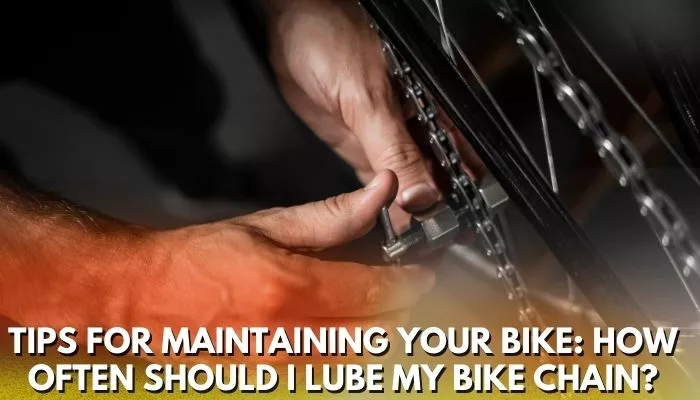
The drive chain is one of the elements that weigh down the most rapidly out of all the elements of a bicycle. As it rubs against other parts of the drive train, the chain is practically always rotating and under persistent tension. It is accessible to the elements, particularly water, and grime, and the chain is thus susceptible to harm.
It’s essential to grease your chain if it is deteriorating or it makes a lot of noise while you are biking. It is indeed a simple bike maintenance operation, which is wonderful news, but how often should I lube my bike chain?
The remainder of the drive train, such as the derailleurs, crankset, the rear wheel gear assembly, will be protected from additional wear by regular chain lubricating, which will also guarantee that your bike chain operates as intended.
Table of Contents
How often should I lube my bike chain?
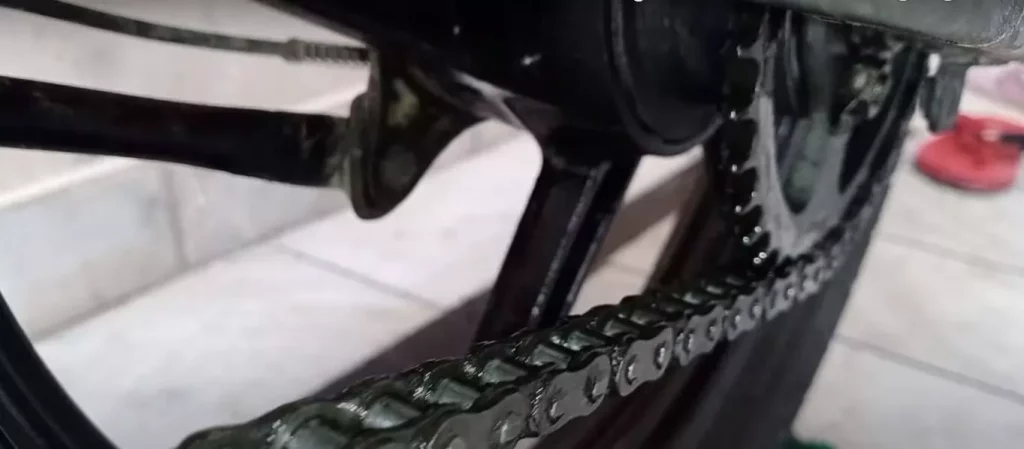
Everything is smooth-running and efficient when you purchase your first bike. If you use it constantly, such as while traveling by bike, you may begin to notice certain noises coming from your chain after a couple of days of operation and possibly a few rainy days.
These disturbances can become quite annoying. You may be confused as to why a brand-new bike generates such a loud sound. You immediately realize that you haven’t yet greased the chains on your bike. So how frequently should you lubricate your bike chain?
Lubricating your bike chain at least once per month, or every 150 to 200 miles, is suggested if you commute by bike consistently (240 to 320 km). This phase might last anywhere from a few days to a month, depending on the circumstances in which you ride your bike and the type of chain lubricant you use.
You will need to take greater care of your chain when riding in muddy settings or during the colder months when there are salts on the roadways than when biking on the pavement on warm, dry springtime days.
Maximum Performance
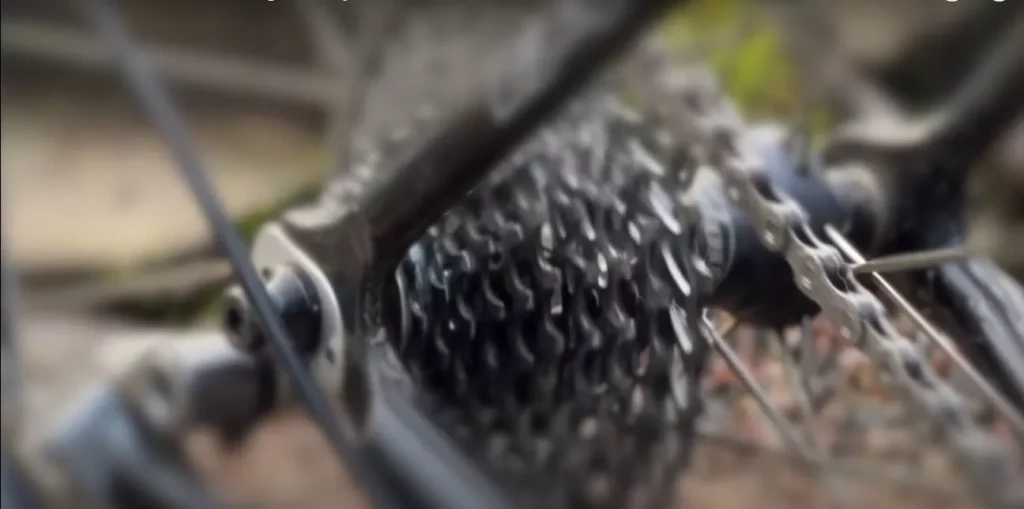
Your bike will benefit from frequent maintenance and greasing of the drive chain if your bike is frequently using it many times per week. To keep your bike’s drive chain functioning at its optimum and being safeguarded, Bike Instructors recommends cleaning and greasing it at least once a month.
Usually, the dirtier components of your bike are the chain and transmission, and this grime is terrible for the bike’s performance and endurance. Particularly:
- A faster rate of chain degradation.
- Links in a chain could be more flexible.
- Cogs in the drivetrain and derailleur components have seen significant wearing.
- Performance problems when moving.
What to Use
The chain’s life may be extended by using the appropriate lubricant in addition to ensuring that it functions effectively. The thin consistency of lubricants used in domestic spraying can actually dry up bike chains.
Oils derived from vegetables should not be used because they gum up. Because they are excessively thick, motor oils do not fully penetrate the chain. The ideal option is a lubricant with a mineral basis that is designed solely for bike parts.
Why is it Crucial To Lubricate My Chain?
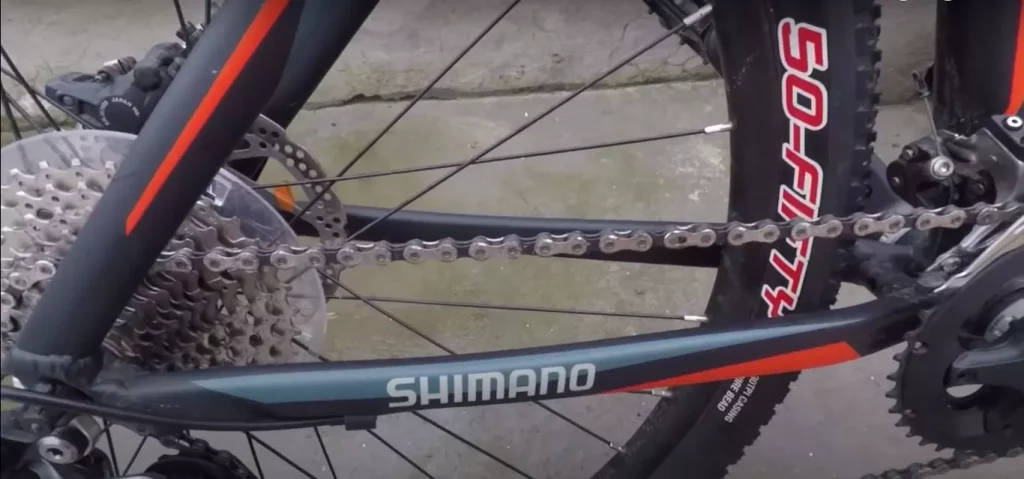
Your chain, which is subject to significant degradation since it distributes the force from your knees to the wheels, is quite susceptible. It sits relatively low on the bike. Thus, it is susceptible to easily taking up water, salt, grime, and muck. While you are riding, it is constantly experiencing stress.
A loud, unloved chain that appears as though it may snap at any minute is one that is eroded and uncared for. Fortunately, chain snapping is infrequent and extremely difficult to avoid.
For it to happen, you really need to abuse and mistreat your chain for a very prolonged period. You have to work harder to get to your objective because of unnecessary stress created by a badly maintained chain.
If I Don’t Lubricate My Chain, Will it Break?
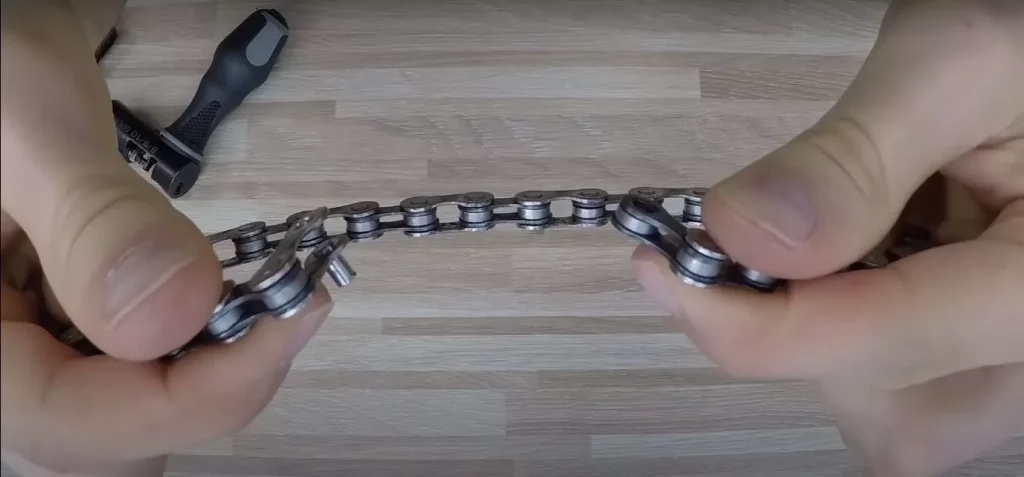
There is no lack of lubrication to account for your chain’s strength or susceptibility to breaking. The issue is that if you don’t maintain pace with the chain, your cassette, and cranksets will wear out more quickly.
It will change the way your bike generally rides, the way it shifts gears, and it will create all sorts of sounds. If you don’t maintain your chain adequately and don’t replace it as it comes near the end of its service life, it may inevitably snap.
Is Dry Lube Preferable To Wet Lube?
According to their names, both wet and dry lubes are designed particularly for use in wet and dry settings. Rain, slush, and snow are less harmful to wet lubricants. The fact that it is more resilient than dry lubricant is an advantage, but the main drawback is that it draws more grime. Dry lubricant is suitable for use in dry times and environments. Dry lubricant can be used in dry areas and seasons. It has to be used more periodically, approximately every 100 miles (160 km), but it accumulates less grime than wet lubrication.
Considerations for Bike Chain When Cleaning and Lubricating

- Tight Links
These links are brittle and no longer bend readily. Watch every link of your chain as it goes through the narrow bends of your back derailleur to distinguish them as you gradually pedal your chain backward.
Most of these difficulties are driven on by corrosion or dirt between the link plates; they may be addressed by cleaning, greasing, and gently bending back and forth.
Others are caused by improper pin placement (the pin connecting the chain links connected is not completely placed through the linkages and rollers) or significant chain deterioration.
With the aid of a chain tool or your hands, it is sometimes possible to reposition improperly secured link pins by pushing them back and forth within their chain plates. Chains that are damaged need to be thoroughly replaced.
- Stretch Chains
Chains become longer as they deteriorate. Stretch is the term used to describe anything, yet nothing actually extends. Chains become lengthier when link pins and rollers start to wear out.
In certain circumstances, this leads to “skipping” of gear since it causes sloppy or free play. The chainrings and back cog teeth also suffer more wear and damage as a consequence.
A chain may be replaced for a lesser amount of money than a gear set. Take your bike to some other Bike Warehouse location or a local repair shop to have the chain worn tested.
WD40 for Chain Lubrication
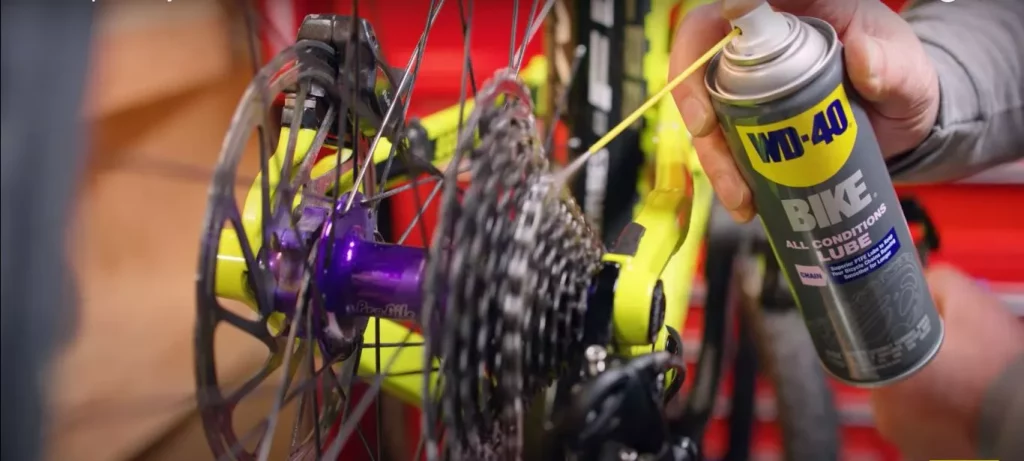
WD40 is a seductive option due to how simple it is to work with. While WD40 is cleaner and can be employed to remove the grime off your chain, it is not intended to be utilized as lubrication for a minimal maintenance bike, like a commuter bike. It is far too light and quickly fades off.
It’s conceivable that even professional riders have confessed to using WD40 as chain lubrication and cleaner (Simon Richardson on GCN). It would be best if you comprehend this strategy from its wider perspective.
You won’t have any problems if you clean your bike chain after each ride and treat it with WD40. The issue is that commuting bikes are intended to be powerhouses, which is a dilemma.
You should keep away from ordinary WD40 unless you’re prepared to wash your bike chain after every ride (or, at minimum, fairly frequently).
Take into consideration that WD40 has started producing appropriate cleanser and chain lube substances with the same package aspect as the classic WD40. It will maintain your bike chain delighted for much longer and is just as simple to use as the standard stuff.
Over Lubrication
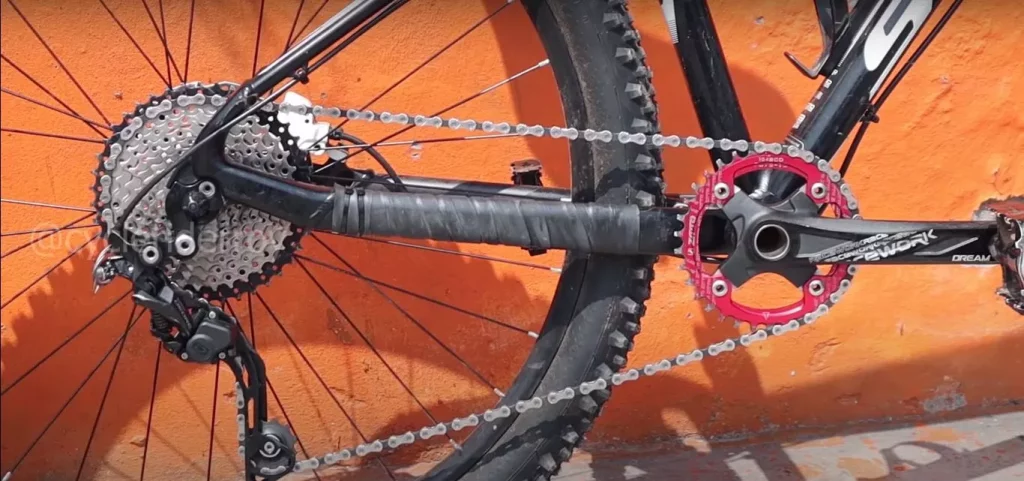
You should be informed that lubricating is not required on the outer plates, merely at the rivets. The chain will become blocked with grime if there is excessive lubrication. It is unnecessary for lubricating oil and dirt to interact to create a grainy mixture.
Your drive train’s chain and other parts are protected from friction by employing the right chain lubricant. Because corrosion is inhibited by the water, it cannot happen. It makes it possible for the drive chain to carry on working efficiently for many generations.
Tips for Bike Lubrication
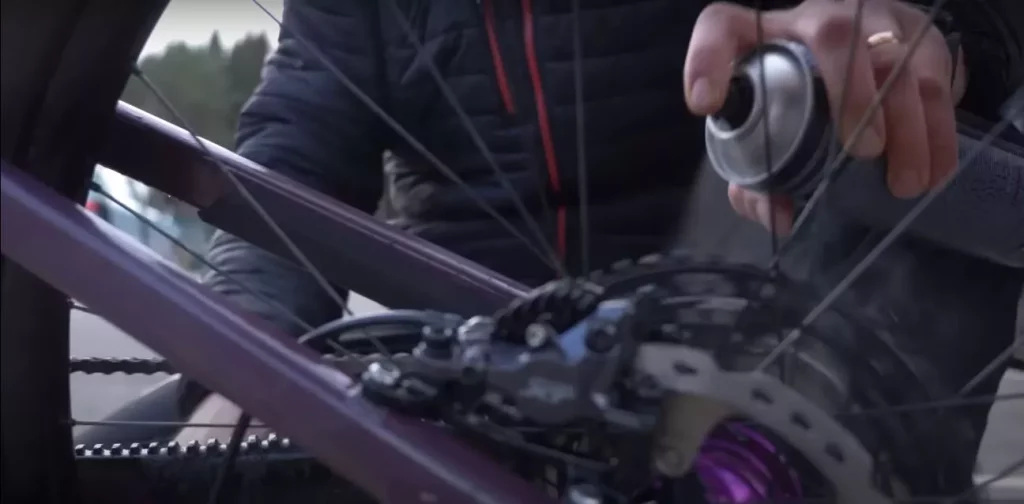
- Every year, even if it is not being utilized, you should clean and lube your bike and chain.
- Apply a moist lube to the chain after each ride to extend its life while increasing the pleasure of the following ride.
- Each time you drive 100 miles, clean and relubricate the chain. Some motorcycles may even run 200 to 500 miles without further relubrication. It’s important to keep in mind that relubrication has no regular schedule; instead, the ideal time to perform it relies on the owners’ expertise.
- Consider relubricating after a few kilometers if you anticipate muddy or rainy weather. By the moment you return, the chains may have undergone substantial wear because water has rinsed the lubricant away.
- The frequency of riding is yet another factor that influences how commonly you oil your bike. How long are your rides? Are you a short-distance rider who rides mostly for pleasure or a long-distance rider who rides tolerably?
- It is recommended to oil your vehicle once a week while riding great distances. There are long-distance bikers who lubricate after every ride, so it depends entirely upon the type of lubrication used and the condition of the routes.
- You might need to undertake periodic lubrication if you keep accumulating dirt and debris.
Typical Rider
Long-distance bikers require more frequent oiling, while frequent bikers don’t. It could be okay to exercise twice or three times each week. Some people lubricate once a month based on the kind of grease they use.
Infrequent Users
Each application of the chain could last a long time for cyclists going small distances. You don’t ride very often, which is why. You run the risk of experiencing the longest wear if regular lubrication is not utilized.
FAQs:
What is the shelf life of chain lube?
For up to 100 kilometers, dry chain lube generally lasts. For each 50 to 100 miles, you should reapply waxed chain lube.
Wet chain lube could last for now over a hundred miles, and Finish Line’s Porcelain Wet Chain Lube is claimed to have a limitation of 175 miles, letting it last even more.
Can I lubricate my chains with olive oil?
However, a few of the lubrication selections will cause the lubricants to degrade. Therefore, individuals most commonly used cooking oil, olive oil, and domestic lubricates as substitutes for brand-name bike chain lubrication. The important factor is that all of them are simple to obtain at home.
When should I replace the chain lubricant on my bike?
How frequently should your chain be cleaned and lubricated? Well, if you ride each day, a decent general rule of thumb is once per week, and it’s essential to do so after riding in really damp conditions or the downpour. Additionally, if you hear your chain screaming for attention while riding and it seems like your bike is chirping at you, halt right off the bat!
How should a bike chain be dried after being washed?
Use a low-pressure spray of water to thoroughly clean the cassette, chain, cranksets, and derailleur pulleys. Squirting water into any bearings immediately is not recommended. Use a clean rag to wipe everything dry before placing the bike away to complete the air drying time. If you’d want the process to go faster, use compressed air.
Conclusion:
Now you know how often should I lube my bike chain. Although maintaining your motorcycle’s chain is important, we still need to clean and oil our chains. Every 400 to 800 miles, your motorbike chain must be lubricated to keep it functioning at its top performance.
Depending on how you use your bike, you might need to clean the chain less regularly on a road bike than on an off-road bike. Before embarking on another ride, you should always wait for the solvents to dissipate since doing so allows any lubrication to penetrate the chain completely.
